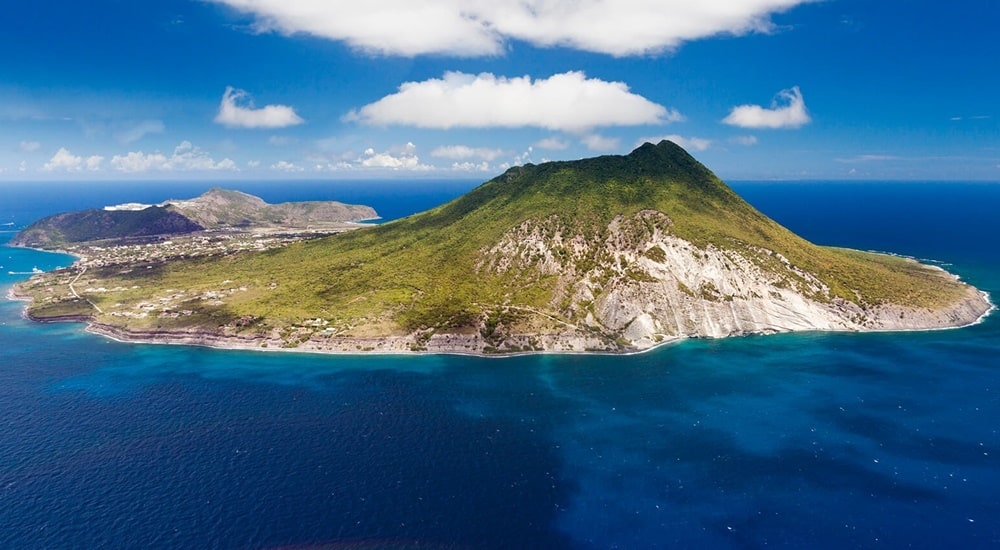St. Eustatius (or "Statia") is an excellent scuba diving destination because of its protected marine park, unique volcanic underwater topography, abundant historical shipwrecks, and undisturbed, low-tourism environment.
Underwater volcanic landscapes
The island's volcanic origins created a dramatic undersea environment, with lava flows and rock outcroppings providing a unique and varied topography for marine life.
- Volcanic "fingers" and "bombs": Lava formations radiate out from the shore, creating a labyrinth of ledges, clefts, and caverns to explore.
- "The Quill": The dormant volcano that dominates the island extends underwater, contributing to the impressive coral-covered lava flows.
- Pinnacles and walls: Dramatic wall sites, like
Grand Canyon
- and The Cliffs, offer the feeling of flight as you glide alongside vertical drop-offs.
Abundant wrecks and historical artifacts
As a major trading port in the 17th and 18th centuries, Statia's seabed is littered with historical and modern wrecks.
- Archaeological sites: Divers can explore sites of old trading ships where artifacts like ballast stones, anchors, and even the iconic blue beads—once used as currency for enslaved people—can be found.
- Modern wrecks: Sunk intentionally as artificial reefs, sites like the 327-foot Charles L. Brown cable-layer are now covered in colorful growth and teeming with fish.
The Chien Tong
- : A 170-foot Taiwanese fishing trawler provides a popular night diving site, where turtles come to rest and rare crabs emerge.
Pristine marine park
- Protection since 1996: The entire coastline is surrounded by the
St. Eustatius National Marine Park
- , which extends from the high-water line to 100 feet deep. This long-standing protection has fostered a healthy and pristine marine environment, shielded from overfishing and anchoring damage.
- Diverse habitats: The park protects a variety of unique habitats, including walls, patch reefs, macro dive sites, and historical wrecks.
- Vibrant marine life: Expect to see green turtles, hawksbill turtles, and occasionally leatherback and loggerhead turtles nesting and swimming. The reefs are also patrolled by Caribbean reef sharks and nurse sharks.
Hidden gem status
Unlike many heavily-touristed Caribbean destinations,
St. Eustatius
remains quiet and uncrowded.
- Low tourism: The island's lack of mass tourism means you won't experience crowded dive boats or sites.
- Eco-friendly approach:
Statia
- leans towards ecotourism, with strong conservation efforts managed by the St. Eustatius National Parks Foundation (STENAPA)
